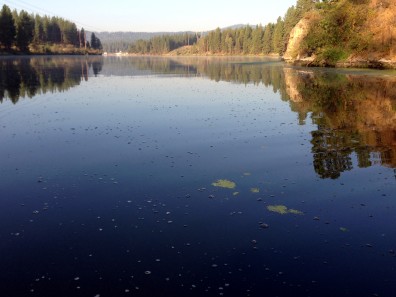
In a new study of six Pacific Northwest reservoirs (available via open access here) we document substantial increases in emissions of methane, a powerful
greenhouse gas, during drawdowns for power generation, flood control, irrigation, and maintenance.
We saw at least a three-fold increase in methane emissions via bubbling and diffusion during drawdowns. In Lacamas Lake, one of the study reservoirs, emissions surged more than 6,000-fold.
We also did a side-by-side comparison of two similar reservoirs and saw that the one with drawdowns released three times more methane than a reservoir located just upstream where water levels were held constant.
A related study released last year, led by Harrison Lab alum Bridget Deemer, found that, collectively, the world’s reservoirs have a greater greenhouse warming impact than all of Canada. The new study suggests steps that might be taken to reduce methane emissions from reservoirs such as timing drawdowns to follow periods when lake oxygen levels could help facilitate the breakdown of methane. It also raises questions regarding whether reservoir drawdowns have been sufficiently considered in recent efforts to estimate methane emissions from reservoirs.